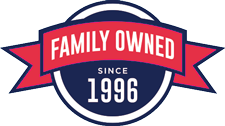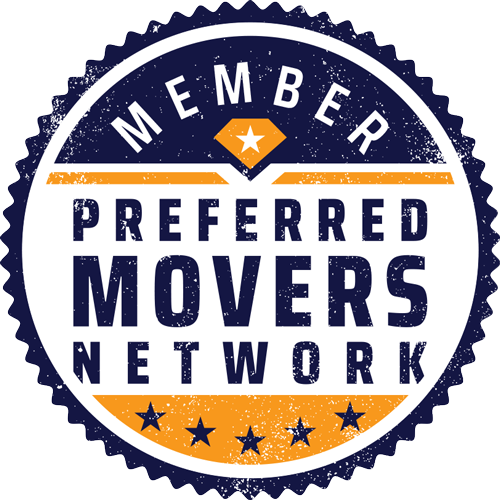Moving Company Customer Journey: From Quote to Completion

Hiring a moving company isn’t just about lifting boxes—it’s about managing a full-scale transition. In the world of residential and commercial moves, the customer journey refers to every touchpoint between you and your moving service—from the initial inquiry all the way through unloading the last item. Each stage presents decisions, expectations, and potential pitfalls.
Hello, I’m Joe Polilio, President of Cousins USA, and I’ve been helping movers in Ft. Lauderdale and beyond relocate since 1996. Moving can be complicated, especially if it’s your first time.
This guide breaks down the high-level steps of your journey with a professional moving company. You’ll see how the experience unfolds, where red flags tend to appear, and how reliable movers operate at each turn. Let’s take the guesswork out of your move.
Phase 1: Discovery and Research – Where the Journey Begins
Thanks to the amount of information available, it’s very easy nowadays to learn about the track record of your local moving companies. While Google and Yelp reviews are obvious sources of information on positive reviews, here are a few places you might not think to look:
- USDOT Number: Any moving company operating across state lines must register with the Federal Motor Carrier Safety Administration. A visible USDOT number on a website conveys compliance and traceability. For example, Cousins USA’s is 70719.
- Better Business Bureau Accreditation: The BBB assigns grades based on complaint history, transparency, and business practices.
- Memberships in Industry Associations: Van lines like Wheaton World Wide and associations with credible sources like the Preferred Movers Network.
Phase 2: Comparing Quotes and Estimates: The Turning Point in Your Moving Journey
Sharpening Financial Clarity Through Quotes
Once a shortlist of potential movers takes shape, the next step of the moving process is gathering quotes. Relying on a single estimate rarely reveals the true market landscape. By securing at least two or three quotes from different moving companies, families gain measurable insights into price variations, service scope, and potential outliers.
Many households assume rate differences stem solely from travel distance or volume. In reality, estimates reflect deeper variations. Some wrap costs for packing materials into the total, while others charge extra. Some include basic liability coverage, while others build in supplemental insurance. You’ll get a clear picture once you have a few quotes in hand.
Requesting In-Home or Virtual Walk-Throughs
During the quote process, you may have a mover come perform an in-person appraisal of your job. It’s during this assessment that the appraiser will identify any complications likely to impact time or cost. An estimate given after an assessment will often be closer to what your final bill might look like. More importantly, they create an audit trail. Every item and proposed service is recorded, leaving little room for confusion on move day.
Phase 3: Day-of-Move Operations and Communication
What Happens When the Truck Pulls Up
The moving crew will arrive during your agreed-upon scheduled window, typically within a one-hour timeframe to accommodate traffic or access challenges. A professional moving company assigns a team lead, often referred to as the crew supervisor or foreman, who serves as the point person throughout the day. This individual will confirm your work order, review any special instructions, and oversee packing, loading, and handling protocols.
Expect the team to present official documentation. This usually includes:
- Bill of Lading: This document acts as the legal contract between you and the company. It includes the estimated charges, origin and destination addresses, and agreed-upon services.
- Inventory Sheet: The foreman will assign a number to every item being moved. Each will be labeled with a corresponding sticker. You’ll sign this inventory both at pickup and delivery to verify the condition.
- Order of Service: Companies will often share a printed or digital layout of the day’s schedule, crew assignments, and major tasks.
What Quality Service Looks Like on Moving Day
- Timely Arrival: Crews that arrive on time—or call ahead if delayed—show organizational discipline and respect for your schedule.
- Protective Materials: Blankets, shrink wrap, furniture pads, and floor runners should be standard. They prevent damage both to your belongings and the property.
- Item Verification: The final walk-through is critical. Your foreman should invite you for a last check of closets, drawers, and attic spaces before signing off.
Phase 4: Follow the Journey: Real-Time Move Tracking and Updates
Proactive Alerts & Communication Expectations
Many movers can deliver automated status updates using email or SMS to keep you informed on the progress of your move on moving day.
If communication matters to you, ask early about:
- Communication methods: Do they use SMS, email, or app-based notifications?
- Update frequency: When will you be notified? Only on departure and arrival, or periodically during transit?
- Response protocol: Is there a direct customer contact in case you need to ask about delays or arrival timing?
Preparing for Delivery Day
Most movers will provide a 2- to 4-hour delivery window on the expected date of arrival. You won’t have to wait all day, but you’ll need to stay flexible within that window. Questions to clarify beforehand include:
- Whether drivers will call or text when they’re within 30–60 minutes of arriving
- What happens if they miss the scheduled window due to traffic or mechanical delays
- If late-evening deliveries are allowed, especially during summer peak season when routes run long
Phase 5: Continuing the Relationship: Post-Move Support and Problem Resolution
Communicating Issues: Get Heard, Get Help
Even with the most experienced moving teams, problems can occur. Furniture gets scratched, deliveries arrive late, or boxes go missing. When that happens, contact the moving company directly, referencing your move ID and include visual proof if possible. Be specific: “Box #14 containing kitchenware is missing,” or “The oak desk has a broken leg, see attached photo.”
Movers respond most quickly to concise, well-organized claims. Use email for a documented trail, and follow up with a call if needed.
Always keep your
- Bill of lading: Confirms items contracted for transport.
- Condition reports: Establish the pre-move condition of furniture and appliances.
- Final invoice: Shows all charges and any notations made by the movers at delivery.
These documents serve as the foundation for all post-move resolution.
Closing the Loop: Sharing Your Experience After the Move
Once the last box is unpacked and the moving crew drives off, the final step in the moving company customer journey begins—sharing your experience.
Not all review platforms hold equal weight. Some get indexed quickly by search engines, while others carry more credibility with consumers. Consider posting your feedback in two or three of the following places:
- Google Reviews: These reviews influence local search rankings and star ratings in map results. They’re usually the first thing prospective customers see, and give a good idea of customer satisfaction levels.
- Better Business Bureau (BBB): Reviews here contribute to a company’s BBB rating and are often referenced during dispute resolution.
Yelp or Angi (formerly Angie’s List): These platforms are heavily used by families researching home service providers.









